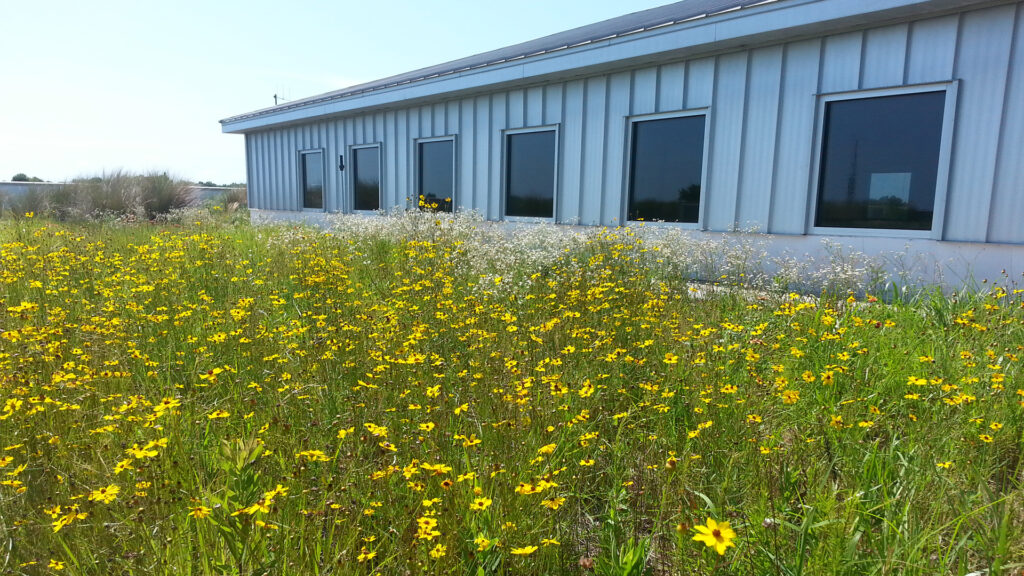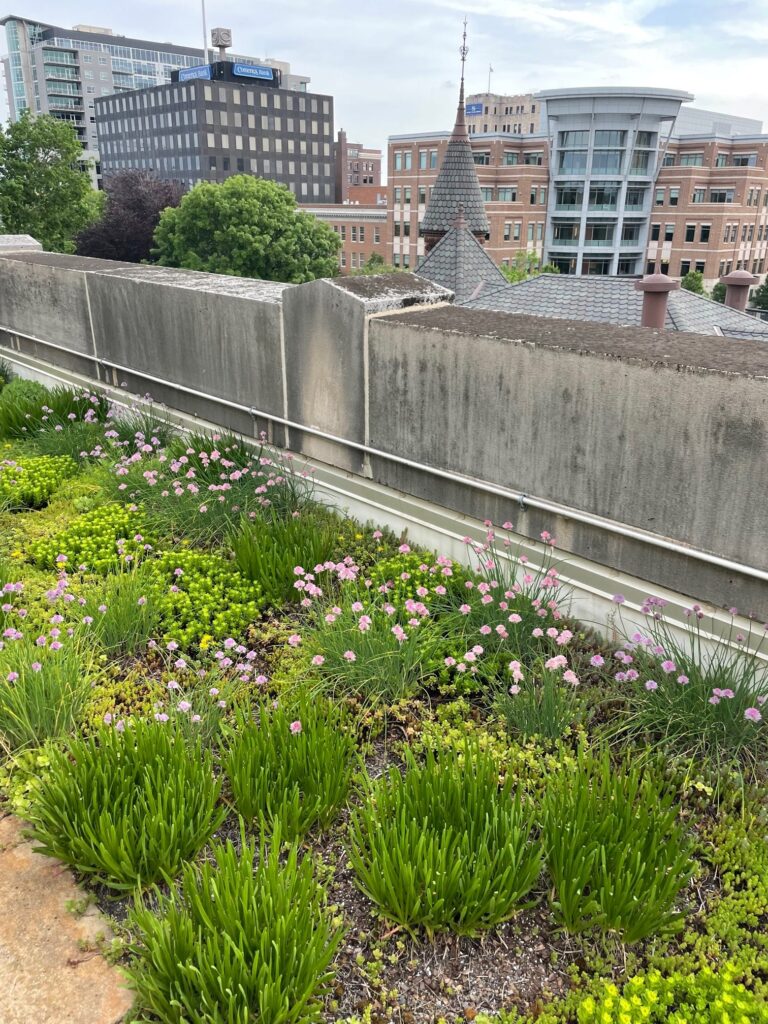By Carrie Stevenson, UF/IFAS
Most of us don’t think much about our roofs until there is a problem — a storm blows away shingles, causing a leak, necessitating a giant blue tarp to hold off the rain until we can get a contractor to replace the roof. But “a roof over your head” is one of those basic needs, perhaps only slightly less necessary for safety and survival than food and water.

Stormwater engineers and landscape architects have been thinking a lot about rooftops, though. Along with hard surfaces like roads and parking lots, roof area in a community is one of the biggest contributors of stormwater runoff. Those impervious surfaces don’t absorb any rainwater, contributing both to the volume and pollution potential of runoff from any given storm.
While only applicable in specific situations, green roofs can provide a practical and beautiful solution to this problem. Escambia County has been home to the state’s largest green roof since 2009, housed atop the county’s Central Office Complex (COC). At over 33,000 square feet, it can absorb nearly 20,000 gallons of water during a rain, reducing flooding in a flood-prone area and allowing rain to soak into soil instead of becoming runoff.
The COC roof was part of the building’s design from the beginning, but many commercial and government buildings have added green roofs as part of a retrofit. The rule of thumb is that if the building is sturdy enough to support an additional story, it can handle the weight of a green roof — including soil, vegetation and water storage.

Last year, I visited the green roof atop Kalamazoo, Michigan’s City Hall. The imposing art deco building was constructed in the 1930s, but the green roof on the building’s perimeter was added in 2011. Like Escambia County, the Kalamazoo addition was funded by a grant. Green roofs add tremendous environmental benefits but can be cost prohibitive.
Besides the runoff reductions, a green roof can provide significant energy savings. Vegetation buffers a building from the incredibly hot summer rooftop temperatures, reducing the use of air conditioning and stabilizing indoor temperatures. This is the case for the Escambia County roof, in which an audit showed a 33% reduction in energy needs when compared to a conventionally designed building.
Green roofs can be built on flat-topped home roofs, and many European countries use them regularly. Plant selection for green roofs varies widely based on climate.
The Escambia County roof is mostly planted with beach dune species, while cooler, less humid regions make ample use of succulents like sedums. Low-growing grasses and native wildflowers are great choices everywhere, providing color with limited maintenance.
Carrie Stevenson is the Coastal Sustainability Agent for the UF/IFAS Escambia County Extension Office, and has been with the organization since 2003. An earlier version of this piece first appeared at https://blogs.ifas.ufl.edu/escambiaco/2022/06/08/weekly-what-is-it-green-roofs/
Sign up for The Invading Sea newsletter by visiting here. If you are interested in submitting an opinion piece to The Invading Sea, email Editor Nathan Crabbe at nc*****@*au.edu.



